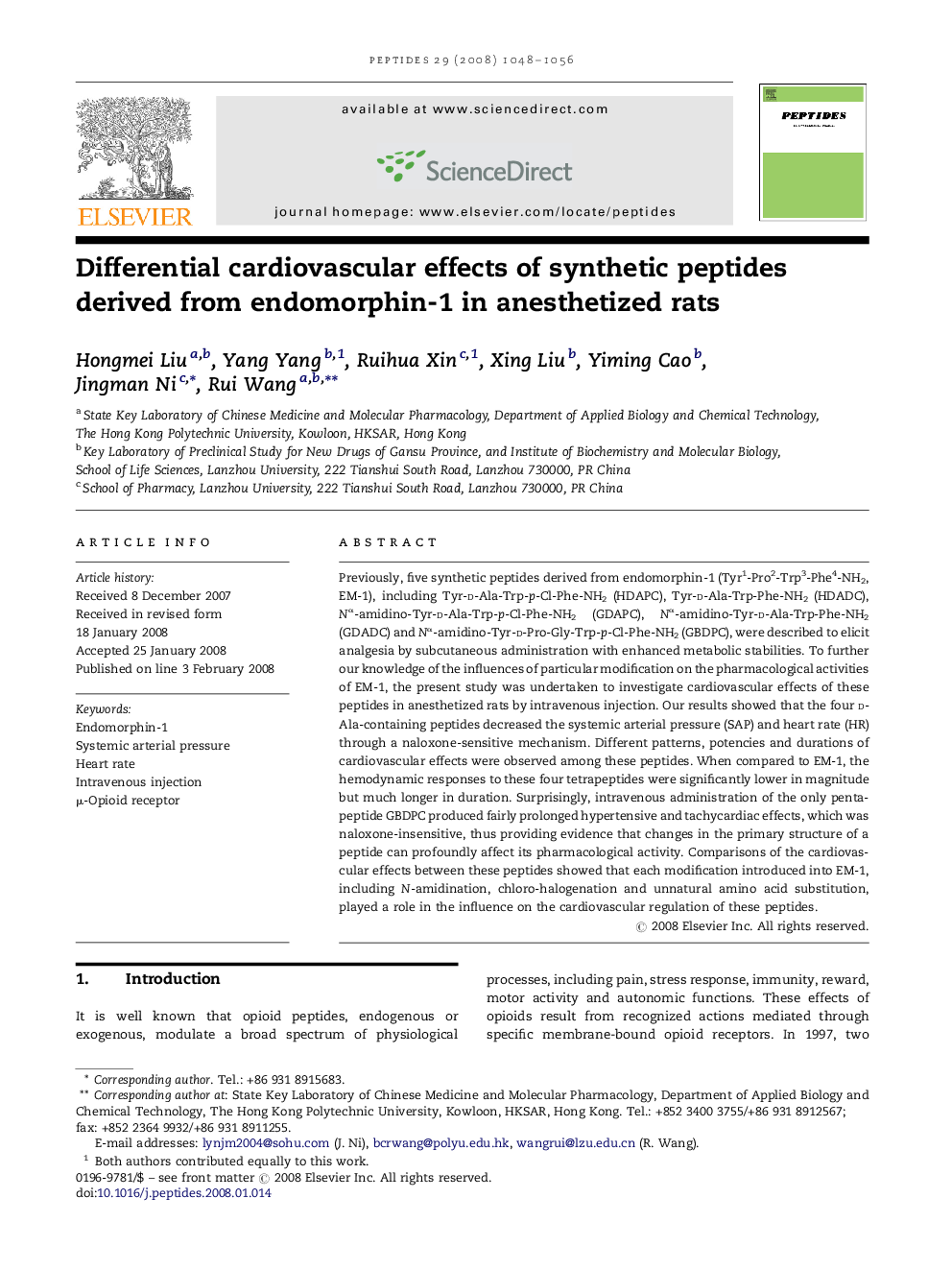| Article ID | Journal | Published Year | Pages | File Type |
|---|---|---|---|---|
| 2008383 | Peptides | 2008 | 9 Pages |
Previously, five synthetic peptides derived from endomorphin-1 (Tyr1-Pro2-Trp3-Phe4-NH2, EM-1), including Tyr-d-Ala-Trp-p-Cl-Phe-NH2 (HDAPC), Tyr-d-Ala-Trp-Phe-NH2 (HDADC), Nα-amidino-Tyr-d-Ala-Trp-p-Cl-Phe-NH2 (GDAPC), Nα-amidino-Tyr-d-Ala-Trp-Phe-NH2 (GDADC) and Nα-amidino-Tyr-d-Pro-Gly-Trp-p-Cl-Phe-NH2 (GBDPC), were described to elicit analgesia by subcutaneous administration with enhanced metabolic stabilities. To further our knowledge of the influences of particular modification on the pharmacological activities of EM-1, the present study was undertaken to investigate cardiovascular effects of these peptides in anesthetized rats by intravenous injection. Our results showed that the four d-Ala-containing peptides decreased the systemic arterial pressure (SAP) and heart rate (HR) through a naloxone-sensitive mechanism. Different patterns, potencies and durations of cardiovascular effects were observed among these peptides. When compared to EM-1, the hemodynamic responses to these four tetrapeptides were significantly lower in magnitude but much longer in duration. Surprisingly, intravenous administration of the only pentapeptide GBDPC produced fairly prolonged hypertensive and tachycardiac effects, which was naloxone-insensitive, thus providing evidence that changes in the primary structure of a peptide can profoundly affect its pharmacological activity. Comparisons of the cardiovascular effects between these peptides showed that each modification introduced into EM-1, including N-amidination, chloro-halogenation and unnatural amino acid substitution, played a role in the influence on the cardiovascular regulation of these peptides.
